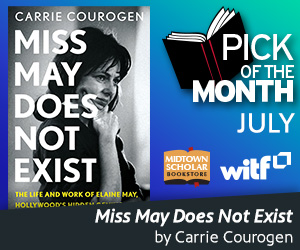Bethlehem bids goodbye to a 107-year-old congregation

iStock
(Bethlehem) — George Hudak, a Slovakian ironworker, came to Bethlehem a century ago to make steel but ended up helping to shape a community that would last long after the smokestacks went cold.
He was one of the founders of what would become Concordia Lutheran Church, an anchor of his South Side neighborhood for 107 years. In November, his grandson, Roger Hudak, rang the church bell for that congregation for the final time in south Bethlehem.
Concordia plans to close the sale of that aging church, at 1240 E. Fourth St., by year’s end and consolidate its services at a newer campus in Moore Township.
“This is a heartbreaker,” said Hudak, a 75-year-old retired teacher.
Pastor Raymond Malec, who has led the church since 1983, said it was too expensive to keep up and the number of congregants who attend service there is shrinking.
Malec said the closing is a sad moment but finds some solace in the fact the building will remain a church, if the agreement of sale goes through with another religious organization by the year’s end. The sale is expected to close by the end of the year.
Concordia’s story begins as many congregations did in the late 19th century as immigrants around the world came to the United States for better opportunities as America became a rising industrial power.
Churches were among the first institutions the immigrants built. The heritage of the ethnic groups was in their churches and their steeples, becoming as much a South Side landmark as Bethlehem Steel’s smokestacks.
Ken Raniere, editor of Southern Exposure, the newsletter of the South Bethlehem Historical Society, counted as many as 32 places of worship that once served the South Side.
Over the years, some have been sold to another congregation, re-purposed for a developer or vacated, most notably in 2008 under the Allentown Catholic Diocese realignment. But the bricks and mortar remain a powerful reminder of the diversity that built the city.
“The churches reflected the great influx of immigrants to Bethlehem — they’re different faiths and denominations,” Raniere said.
Slovakia was steeped in workers skilled in the ironworks industry, making them attractive to the company that would become Bethlehem Steel. As early as 1885, ironworkers from Slovakia were setting up their homestead in south Bethlehem.
By the turn of the 20th century, enough Slovakian immigrants who were Lutheran had come to Bethlehem to form local assemblies, and began talking about forming a congregation, according to a Concordia history publication from 1961.
The church, first known as St. John the Baptist Evangelical Slovak Lutheran Church, was founded Aug. 6, 1911, under the guidance of the Rev. John Hurdy of Hazleton.
A ground-level church, referred to as the “basement church,” was dedicated Oct. 5, 1919 at Fourth and Duncan streets. The church, including furnishings, cost the congregants, many blue-collar workers at Steel, $9,577.58, according to church documents. The church soon bought an organ for $250.
A second story was added to the church in 1930.
Around that time, the church had gone through two pastors and couldn’t afford one during the Great Depression. The Rev. John Daniel, born in Mystic, Conn., was installed in 1936. Teaching at both Lehigh University and Moravian College, Daniel became part of the community and sat on several city agencies, including the Bethlehem water and redevelopment authorities.
Perhaps his boldest contribution during 46 years of leadership was the slow introduction of the English language during worship. Daniel began in 1938 with monthly evening English services and developed the program into a weekly service by 1940. Change came more easily for the congregation’s children at Sunday school, according to church documents Hudak collected over the years.
The congregation pulled together in times of sorrow. It mourned the losses of Martin Fainor and Carl Tomanchik, two of the 30 congregants who served in World War II.
They celebrated hope, including a radio broadcast supervised by “Voice of America” during the Cold War. Concordia was among the Bethlehem congregations that took part in a radio recording beamed cross the Iron Curtain on Christmas Day.
The congregation pulled together to improve the church, raising money for an Allen organ in 1951.
Organ music, Hudak recalled, was a hallmark of church services. He said the congregation dressed in their Sunday best — for him that included a bow-tie as a child — as they met weekly to worship and sing hymns like “Holy God We Praise Thy Name” or Bach’s “Now Thank We All Our God.”
The church was renamed Concordia on March 1,1968. Edwin S. Hollister, then congregation president, told The Morning Call at the time the chief reason was to “avoid confusion and misidentification with the many other St. John churches in the Lehigh Valley.” The name also more readily identified the congregation as an affiliate of the synod of the Evangelical Lutheran churches and the Lutheran Church Missouri Synod, with which it is in fellowship.
The article says the name reflects the “changing nature of membership and mission potential, which was mainly Slovak until World War II, but now represents a wider spectrum of national and American groups.”
After Daniel died, Malec was assigned to the church in 1983. Under his leadership, the church grew outside Bethlehem. A daughter congregation was spun off in Lower Macungie Township in 1986.
In 2010, it opened a church in Moore Township, where it now also serves as the school campus for The Lutheran Academy.
Hudak said the church, like Bethlehem Steel, had been a constant in his life. Steel gave his family a livelihood: employing his grandfather, father and even himself as a college student during the summer.
But the church gave him a life — a place to worship Sunday before the extended family gathered for a meal, and to mourn the deaths of his parents.
He said the candle-and-flower clad chancel and stained glass windows installed when his grandfather was a congregant were a touchstone for generations.
___
More from The Morning Call:
https://www.mcall.com/
___
Information from: The Morning Call, http://www.mcall.com


